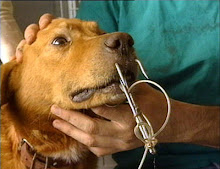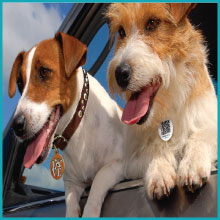
Animal Assisted Therapy Proves Successful With Troubled Teens
Troubled teens experiencing emotional and behavioral issues often benefit from animal assisted therapy, according to mental health professionals. Studies such as Redefer and Goodman (1989) and Kogan, Granger, Fitchett, Helmer and Young (1999) document the benefits of interaction with a therapy pet, and Mallon (1994a,b) cites benefits of farm animals and dogs at a residential treatment facility for children with conduct disorders.
Troubled teens experiencing emotional and behavioral issues often benefit from animal assisted therapy, according to mental health professionals. Studies such as Redefer and Goodman (1989) and Kogan, Granger, Fitchett, Helmer and Young (1999) document the benefits of interaction with a therapy pet, and Mallon (1994a,b) cites benefits of farm animals and dogs at a residential treatment facility for children with conduct disorders.
Equine assisted psychotherapy (EAP) is an emerging form of therapeutic intervention beneficial to the mental health and healing of teens undergoing treatment for depression, anxiety, ADD, alcohol or drug abuse and other disorders.
Equine assisted psychotherapy is a treatment program facilitated by a licensed mental health professional with the assistance of an equine professional where a therapist and teen participate in talk therapy and the processing of feelings as the teen takes responsibility for the care, feeding, grooming and exercising of the horse. The goal is to help the teen build skills such as communication, responsibility and self-confidence in a safe environment in which the teen can make mistakes and learn from them.
History of using animals in therapeutic settings
Animal assisted therapy has been used successfully with teens since the 1960s and primarily was used with children experiencing severe medical conditions and other disabilities. Those who are familiar with equine assisted therapy and canine therapy programs recognize and understand the power of horses and dogs to influence young people in incredibly powerful ways. As the troubled teen learns to communicate with an animal, he or she often finds a correlation between the way parents try to communicate and motivate an obstinate teen. Often teens with trust issues develop close bonds with an animal after taking responsibility for its care and well-being.
“Animal therapy has been proven to increase communication skills, confidence, self-discipline and positive behaviors,” noted Debora Waring, Psy.D., Clinical Psychologist with Ironwood School and RTC. “Equine and canine therapy programs are also effective in improving a teen’s self-esteem, as horses, dogs and other animals give the teen unconditional love and acceptance.”
“Working with animals decreases stress, relieves depression and anxiety, and calms and motivates teens that have difficulty focusing. Animal therapy also helps teens learn compassion, leadership, and work ethic,” added Waring.
Equine and canine assisted therapy helps teens develop the ability to work in a group as well as enhance problem-solving abilities, improve concentration and learn to develop trust. By teaching teens how to work with and communicate with animals, therapists show teens how to utilize these same skills in the teens’ own relationships.
Why is animal therapy so effective with troubled teens?
Teens who have emotional and behavioral issues respond well to equine assisted therapy for a number of reasons, according to Waring. For one, caring for a large and powerful horse is demanding and requires focus and determination, allowing the teen to divert attention from his or her own issues.
Secondly, horses may not want to be coaxed, which challenges teens to overcome their fears in order to lead and work with the animals. Horses also mirror teens’ moods and respond negatively to aggression, demonstrating to teens that their behavior can affect others and that gentleness, kindness and positive actions will work successfully with animals. Therapists often draw metaphors between horse behavior and human behavior, helping teens gain insights into their own emotions. When teens become frustrated, for example, therapists use the opportunity to discuss and model appropriate methods of displaying emotions.
A teen who is learning how to give animal commands also learns to appreciate that others feel good if they did what was asked of them because it feels good when the horse or dog follows his directions. Teens learn how to treat animals gently and with kindness, and once they learn how, this behavior can be applied to the way they treat others. As teens become adapt at caring for the animal, confidence increases, they learn patience, compassion, and responsibility, as well as decision-making and leadership skills.
The healing power of animals in the face of negativity
What about the teen who “hates” horses, dogs, or other animals? Waring recalled that some students she has counseled said they “hated horses and would never ride,” but once teens dealt with and overcame their fear, confidence grew, their anger was diffused, and these same teens opted to complete extra chores in order to earn more riding time and sought riding lessons as well as work in barns upon leaving their treatment programs.
“Imagine struggling through a treatment program because you don’t trust humans,” remarked Waring.
Trusting those whom you have been hurt by is difficult. The wall that adolescents often put up is sometimes too strong to break through. Animals, with their quiet patience and infinite listening abilities, are often the first to crack the facade and allow the teens’ emotions to show. Once teens feel safe, they often make tentative steps in the direction of trusting others and begin searching to make productive and rewarding human relationships as well.
“One teen at Ironwood School and RTC was so closed that the only time we saw kindness and caring was when she was working with her horse,” said Waring. “While she lashed out verbally at her peers, the teen would talk softly about her troubles and stand with her arms wrapped around her horse’s neck. Later in reflection she wrote in her journal, ΄Who would have ever thought that the first person I would trust would be a horse!’ This young lady built confidence, communication skills, and an ability to verbalize her needs in a productive manner from working with a horse.”
“It is difficult to name all the benefits of animal assisted therapy, but one of the biggest values is that animals help teens to see outside of themselves, and they learn that giving to others is sometimes the greatest and most fulfilling reward,” stated Waring.
Why animal therapy treatment programs are successful
At certain residential therapeutic boarding schools, animals are utilized as therapeutic facilitators to improve socialization and communication, to decrease boredom and isolation, to increase mood and affect, to lessen depression, to decrease manipulative behavior, to improve memory and recall, and address grieving and loss issues. Treatment is individualized to each teen’s specific needs, and outcomes from equine assisted therapy, canine therapy and working with other animals have been extremely successful.
“Often students ask to spend time in a stall or out in the field with a horse after a rough therapy session or a hard day,” commented Waring. “Young male teens who come to treatment with a ΄gang mentality’ feel the most comfortable opening up and showing their softer side to the animals first. What they get in return from the animals is the positive reinforcement they need to begin to strip away the role they play and learn who they are as an individual.”
Therapists have observed teens lay down beside pigs in the stalls with their arms draped around them and talking about their days and their struggles. To struggling teens, these relationships seem so easy and uncomplicated. Here is a relationship in which they give and get back, in which they talk and feel heard, in which they must listen to the animal’s body language in order to communicate.
Animals have different personalities and teens must learn how to read each animal’s signals and deal with personality quirks. Sometimes teens don’t like working with a certain animals at first; however, after they figure each other out they see how building the relationship is a metaphor for dealing with social situations. Each teen bonds and grows with a different animal. Alpacas, chickens, pigs, dogs, cats, rabbits, horses, mini mules, and mini horses make up the animal population at Ironwood and offer new learning opportunities each day.
“For example, in moving a stubborn pig down to her new living quarters, the pig gave students a run for their money, squirming and running away whenever she got the chance,” recalled Waring. “The entire resident population of Ironwood came together and developed a plan to get the pig safely home. Many of the teens who participated were able to draw a metaphor in relation to the need to come up with their own plans and support for returning home. As a result, they initiated a group where teens shared the metaphors derived from their experience.”
About Ironwood School and Residential Treatment Center. Ironwood is a one-of-a-kind combination of a traditional boarding school and therapeutic treatment program that specializes in working with teens who are struggling, underachieving, and whose behavior is often out of control. For information, call 1-800-476-0708, email info@ironwoodmaine.com, or click www.ironwoodmaine.com.




2 comments:
Here something is new to read and also some very good information...Please keep me updated as much as possible....
It makes sense that kids with a rough past, or that have been hurt in relationships, would open up to animals. Thanks for a great article.
Post a Comment